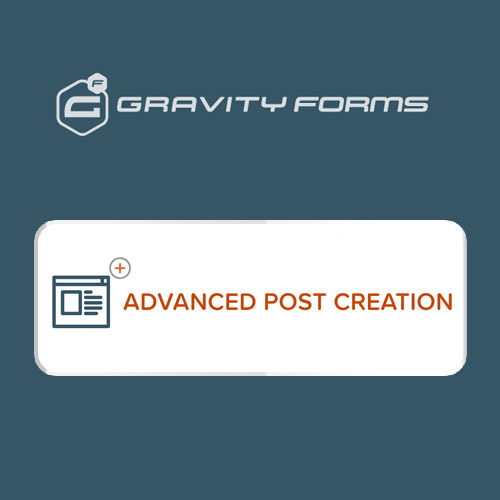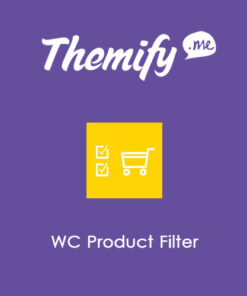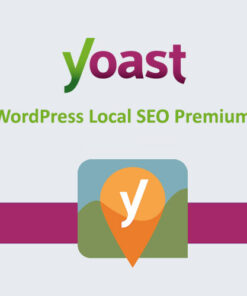Gravity Forms Advanced Post Creation Addon
$259.00 Original price was: $259.00.$0.00Current price is: $0.00.
- Very cheap price & Original product !
- We Purchase And Download From Original Authors
- You’ll Receive Untouched And Unmodified Files
- 100% Clean Files & Free From Virus
- Unlimited Domain Usage
- Free New Version
- License : GPL
- Product Version : 1.4.0
Last updated on : August 30th, 2024
DOWNLOAD NOW!
This and 3000+ plugins and themes can be downloaded as a premium member for only $15. Join The Club Now!Gravity Forms Advanced Post Creation Add-On
The Gravity Forms Advanced Post Creation Add-On extends the capabilities of Gravity Forms by enabling users to create and manage WordPress posts directly from form submissions. This add-on is particularly useful for automating content creation, streamlining workflows, and enhancing the overall efficiency of your content management system. In this guide, we will explore the features, benefits, setup process, and best practices for using the Gravity Forms Advanced Post Creation Add-On.
What is the Gravity Forms Advanced Post Creation Add-On?
The Gravity Forms Advanced Post Creation Add-On is a powerful extension for Gravity Forms that allows you to create and manage WordPress posts based on user submissions. This add-on provides advanced options for post creation, including custom post types, taxonomies, and fields, enabling you to automate the content generation process from form data.
Key Features of Gravity Forms Advanced Post Creation Add-On
- Custom Post Types and Taxonomies: Create posts in custom post types and assign terms to taxonomies based on form submissions.
- Custom Field Mapping: Map form fields to custom post fields, allowing for detailed and flexible post content creation.
- Conditional Logic: Use conditional logic to control when and how posts are created based on form input.
- Draft and Publish Options: Choose to save posts as drafts or publish them immediately upon submission.
- User Role Integration: Assign posts to specific user roles or authors based on form data.
- Automatic Updates: Update existing posts automatically based on form submissions, if applicable.
- Integration with Other Add-Ons: Work seamlessly with other Gravity Forms add-ons for enhanced functionality and flexibility.
Benefits of Using Gravity Forms Advanced Post Creation Add-On
1. Streamlined Content Creation
Automate the process of content creation by generating posts directly from form submissions. This streamlining reduces manual effort and ensures that new content is consistently created based on user input.
2. Enhanced Efficiency
Eliminate the need for manual data entry and content creation. By automating these processes, you save time and reduce the risk of errors, allowing you to focus on more strategic tasks.
3. Customizable Post Creation
Customize how posts are created by mapping form fields to custom post types, taxonomies, and fields. This flexibility ensures that the content generated meets your specific requirements and integrates seamlessly with your WordPress site.
4. Conditional Logic
Use conditional logic to determine when and how posts are created based on user responses. This feature allows for more precise and targeted content creation, enhancing the relevance and quality of the generated posts.
5. Integration with User Roles
Assign posts to specific user roles or authors based on form submissions, ensuring that content is managed and attributed appropriately. This integration is useful for managing user-generated content and collaborative workflows.
6. Automatic Updates
Automatically update existing posts based on new form submissions. This feature is valuable for maintaining up-to-date content and ensuring that changes are reflected promptly.
How to Set Up the Gravity Forms Advanced Post Creation Add-On
1. Install and Activate the Add-On
Begin by downloading the Gravity Forms Advanced Post Creation Add-On and uploading it to your WordPress site.
- Installation Steps:
- Log in to your WordPress dashboard.
- Navigate to Plugins > Add New.
- Click Upload Plugin and select the downloaded add-on file.
- Click Install Now and then Activate the plugin.
2. Configure Add-On Settings
After activation, configure the settings for the Advanced Post Creation Add-On to define how posts should be created from form submissions.
- Configuring Settings:
- Go to Forms > Settings in your WordPress dashboard.
- Select Post Creation from the list of add-ons.
- Adjust settings such as post types, taxonomies, and field mappings according to your needs.
- Save your settings to apply the changes.
3. Create a Form for Post Submission
Build a form in Gravity Forms that will be used to collect data for post creation. Include fields that correspond to the content you want to generate in your posts.
- Steps to Create a Form:
- Go to Forms > New Form.
- Add fields to the form, such as text fields, dropdowns, and checkboxes.
- Configure field settings and labels to match the content requirements for your posts.
- Save your form.
4. Configure Post Creation Settings in the Form
Set up the post creation settings within the form to specify how form submissions should be processed into posts.
- Configuring Post Creation:
- Open the form you created in the form editor.
- Navigate to Settings > Post Creation.
- Configure options such as post type, status (draft or publish), and field mappings.
- Set up conditional logic if needed to control when posts should be created.
- Save your settings.
5. Test the Integration
Before going live, test the form to ensure that posts are created as expected based on form submissions.
- Testing Steps:
- Submit a test entry through your form.
- Check the WordPress dashboard to verify that the post has been created.
- Review the post content and settings to ensure accuracy.
- Make adjustments as needed based on test results.
6. Monitor and Manage Posts
After launching your form, monitor the posts created through form submissions and manage them as needed.
- Monitoring and Managing Posts:
- Go to Posts in your WordPress dashboard to view the posts created.
- Edit or update posts as needed.
- Use the Advanced Post Creation Add-On’s features to manage and automate post updates.
The Importance of GPL WordPress Plugins and Themes
Understanding GPL
The General Public License (GPL) is a free software license that allows users to freely use, modify, and distribute software. Many WordPress plugins and themes, including the Gravity Forms Advanced Post Creation Add-On, are released under the GPL.
Benefits of Using GPL WordPress Plugins and Themes
- Cost-Effective: GPL software is often available for free or at a lower cost, making it accessible to a wider audience.
- Customizable: Users can modify and adapt GPL software to meet specific needs, providing greater flexibility and control.
- Community Support: GPL plugins and themes benefit from a strong community of developers and users, ensuring ongoing support and updates.
Why Choose GPL WordPress Plugins and Themes?
Choosing GPL-compliant plugins and themes ensures that you have full control over your website’s functionality and design. It supports a collaborative and community-driven approach to development, fostering innovation and reliability in the WordPress ecosystem.
Conclusion
The Gravity Forms Advanced Post Creation Add-On is a valuable tool for automating the process of content creation and management within WordPress. By integrating form submissions with post creation, this add-on streamlines workflows, enhances efficiency, and provides customizable options for generating content.
Implement the Advanced Post Creation Add-On to leverage the power of Gravity Forms and automate your content creation processes. Enjoy the benefits of streamlined workflows, improved efficiency, and customized content management by integrating this powerful tool into your WordPress site.
Be the first to review “Gravity Forms Advanced Post Creation Addon” Cancel reply
Related products
LearnDash LMS
CodeCanyon
Wordpress Plugins
GeoDirectory
WooCommerce Plugins













Reviews
There are no reviews yet.